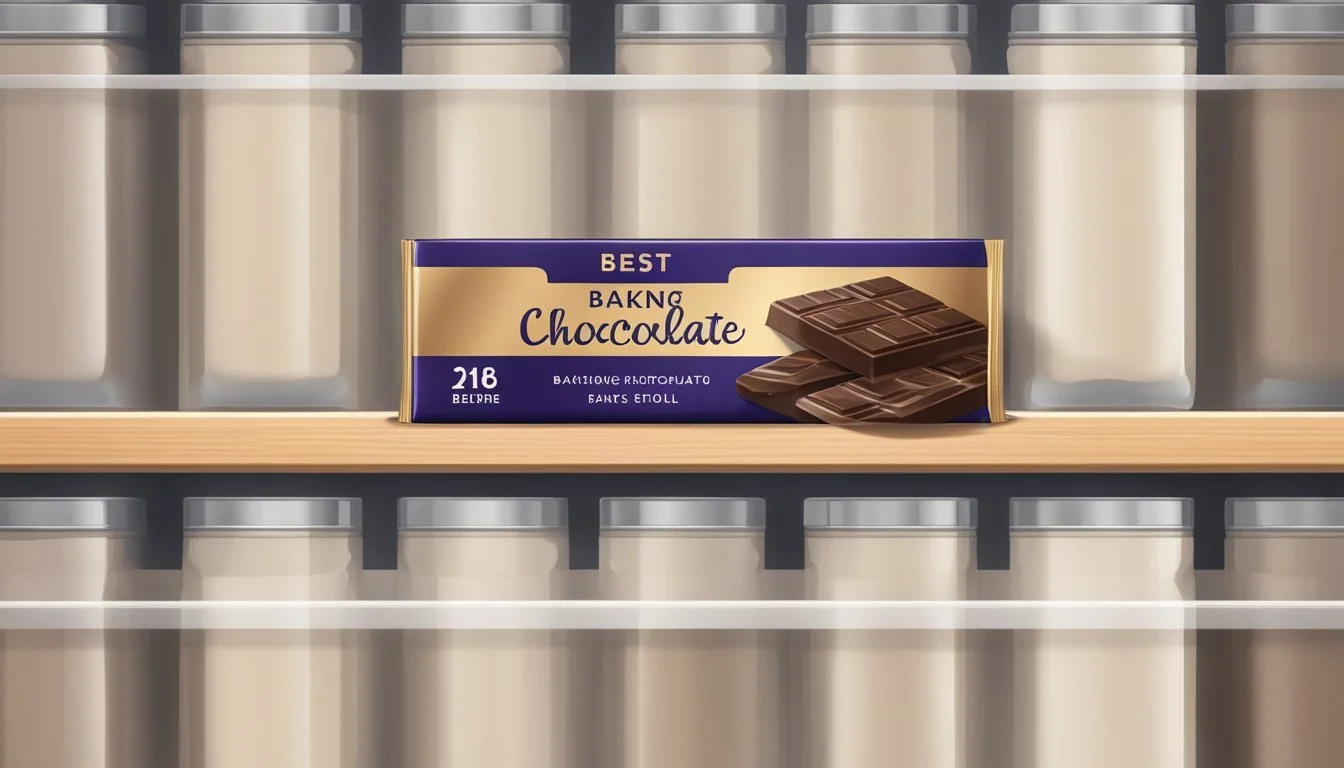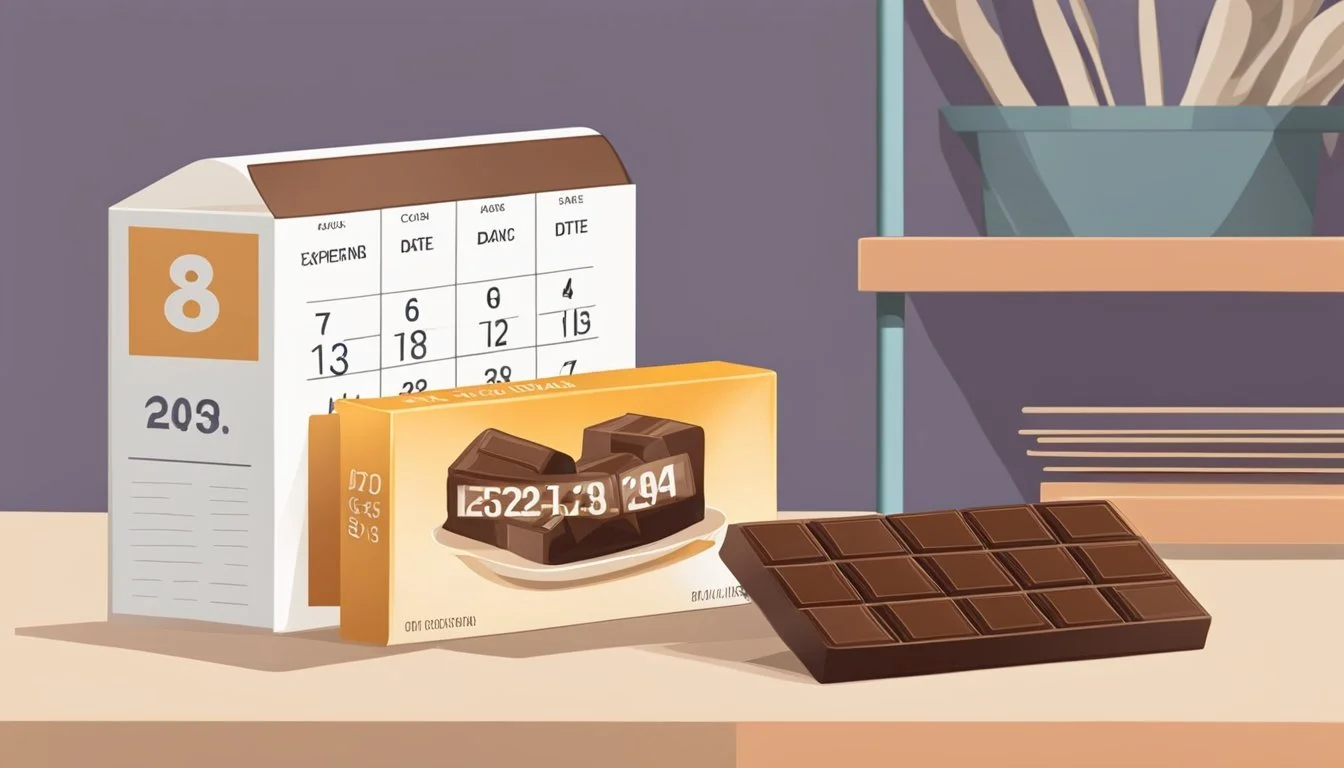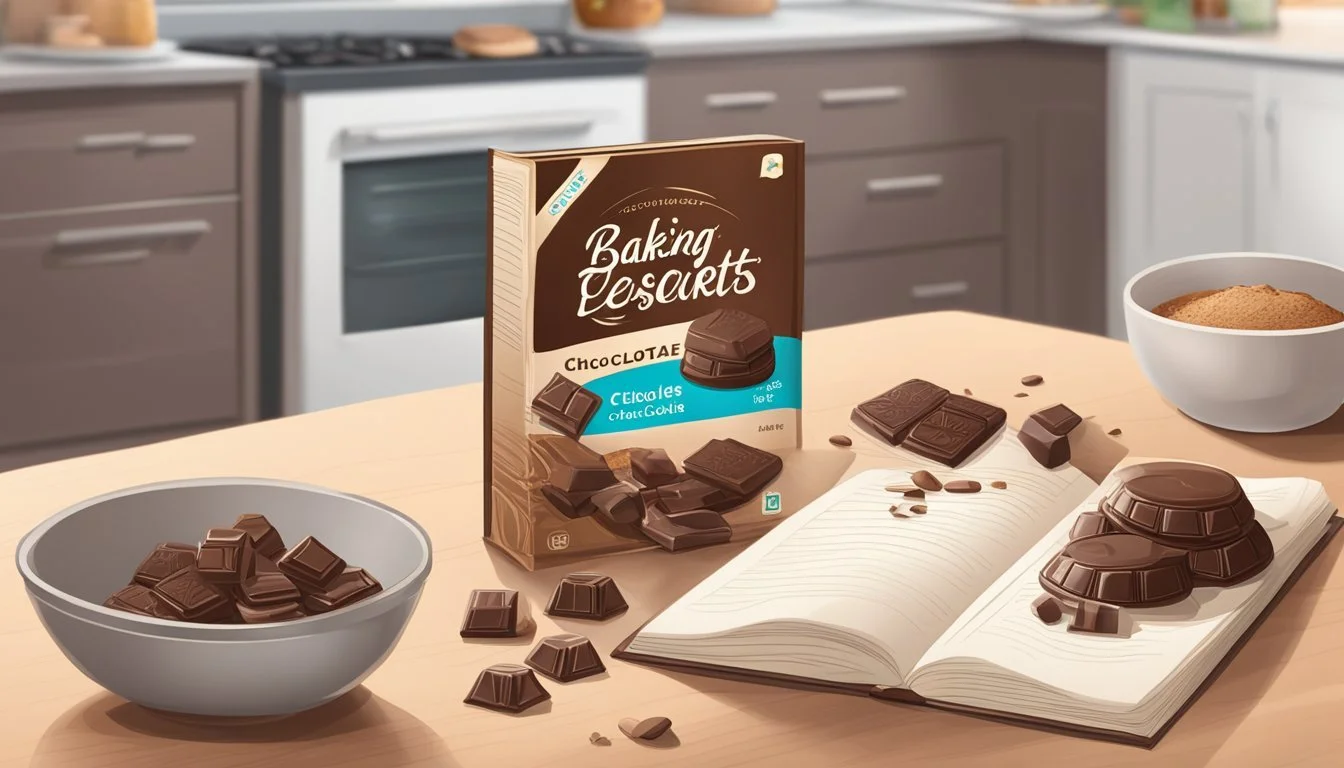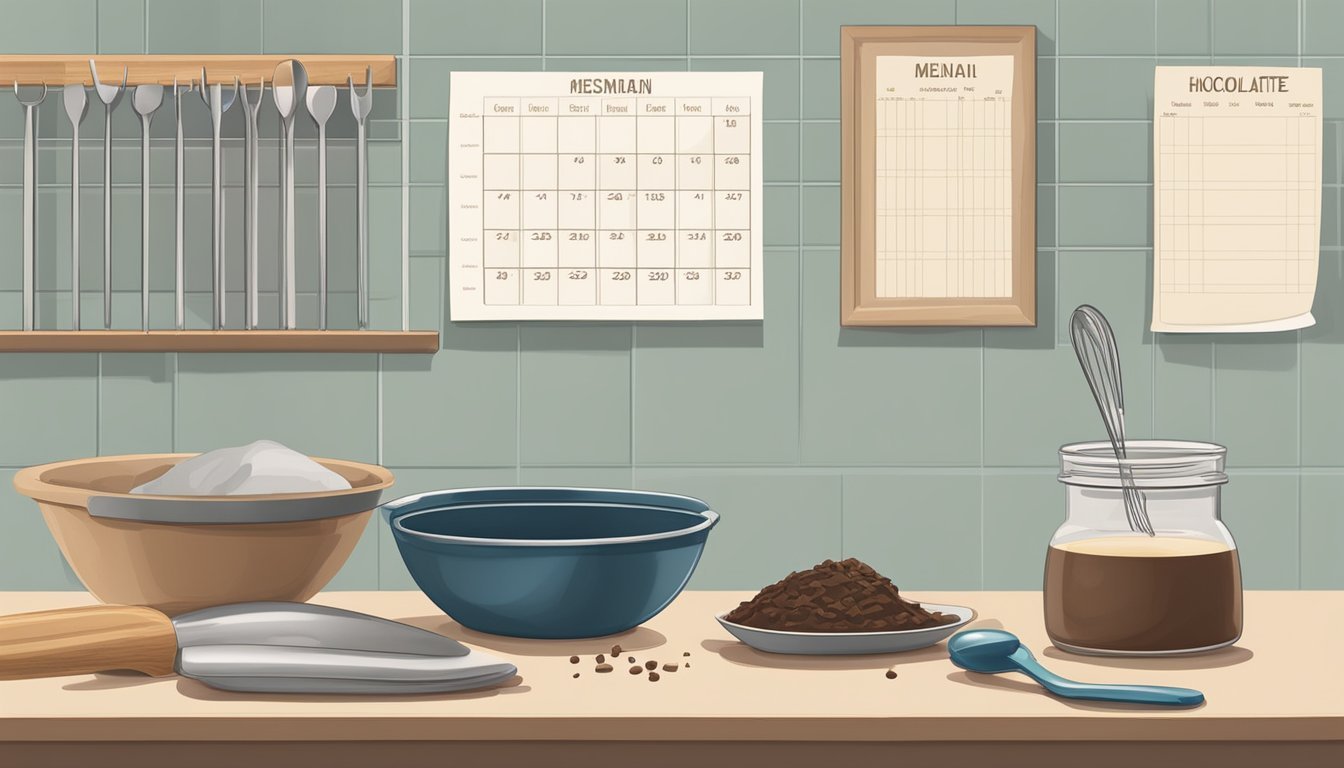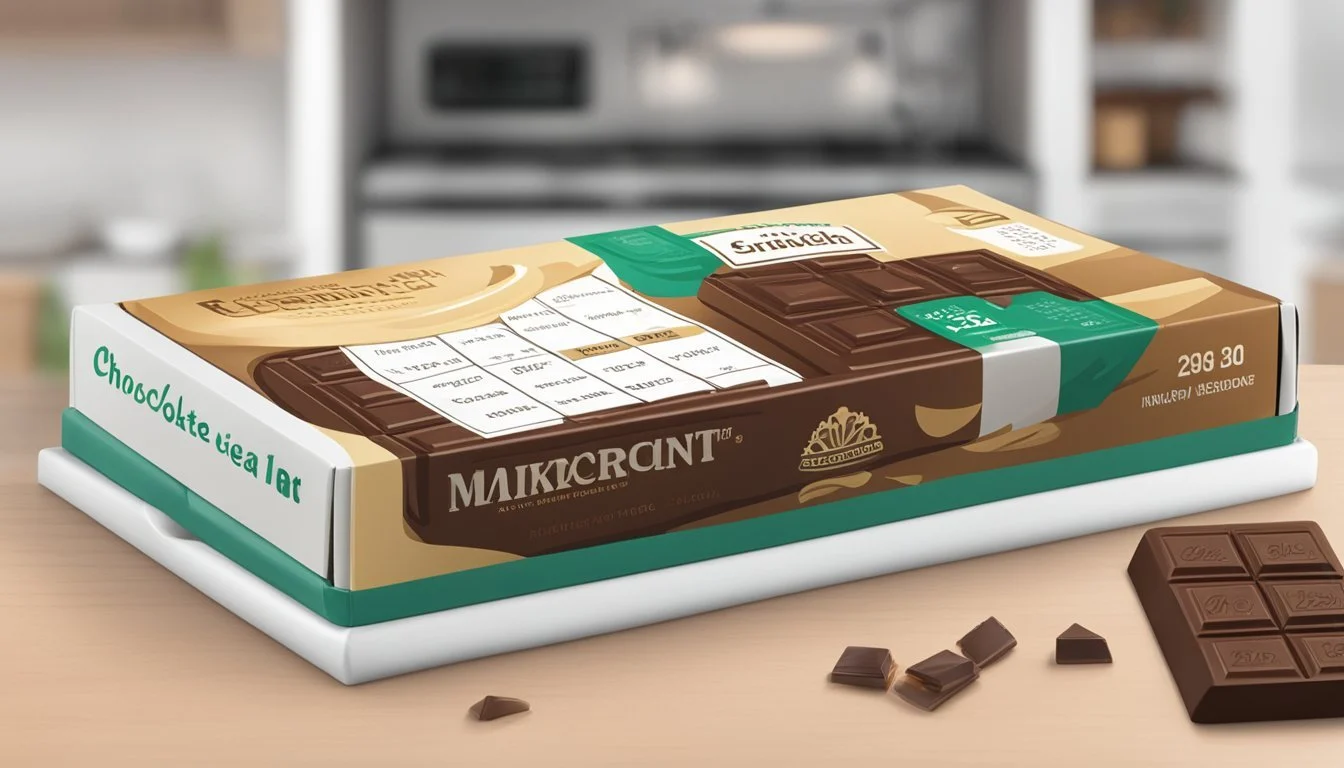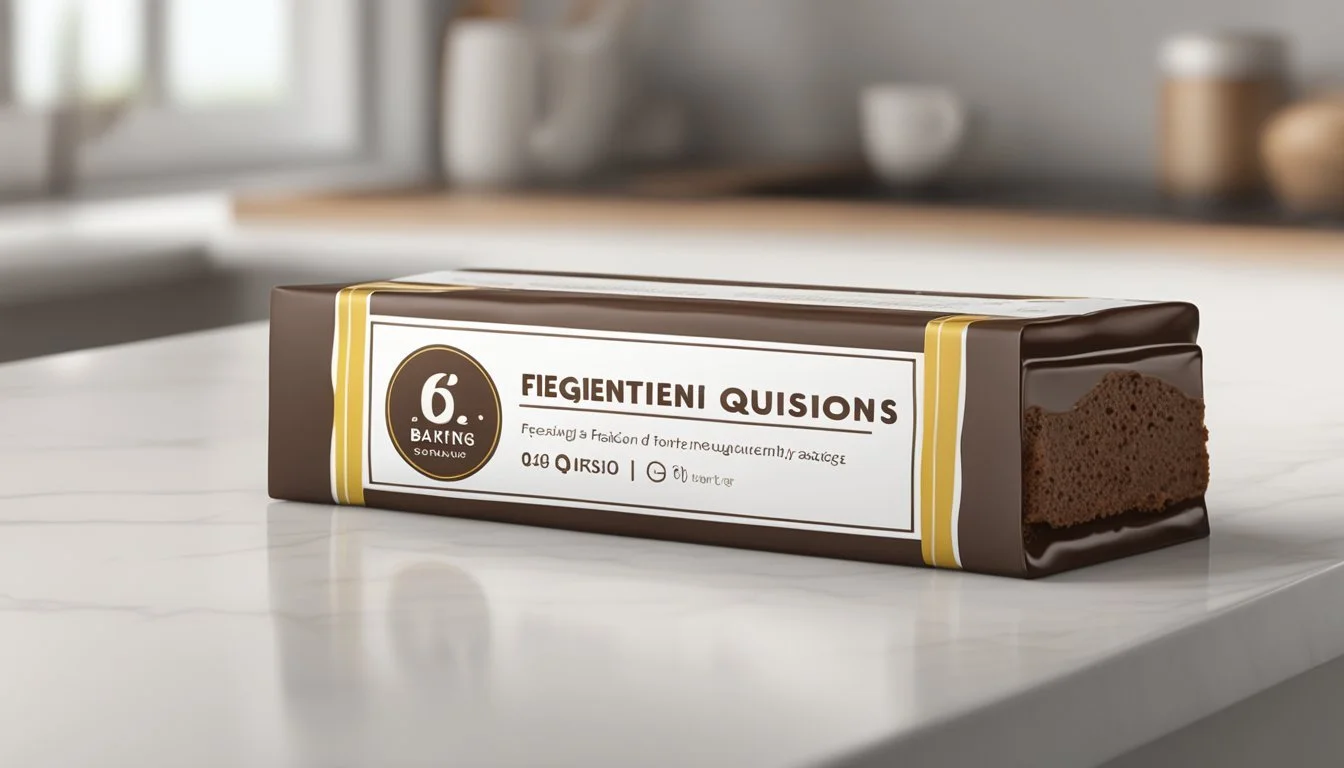How Long Does Baking Chocolate Last?
Understanding Shelf Life and Storage Tips
Baking chocolate (What wine goes well with chocolate?) is a staple in any baker's pantry, valued for its ability to transform into decadent desserts and rich confections. Understanding its shelf life is essential for both food safety and flavor preservation. Like other forms of chocolate, baking chocolate is made from cocoa solids and cocoa butter, (how long does cocoa butter last?) but it typically contains no added sugar (how long does sugar last?), making it an ideal component for controlling sweetness in recipes. Although it's known for having a more extended shelf life than its sweeter counterparts like milk and white chocolate, the quality of baking chocolate can diminish over time.
The determining factors for the shelf life of baking chocolate include the type of chocolate, storage conditions, and whether it has been opened. Dark baking chocolate, which contains less dairy and sugar, generally has a longer shelf life, lasting up to two years if the packaging is unopened and it is stored correctly. Proper storage means keeping the chocolate in a cool, dry place away from any direct sources of heat and light, which can negatively affect its quality.
Once opened, baking chocolate should be tightly wrapped to prevent exposure to moisture and other kitchen odors that could be absorbed. While freezing can extend the shelf life, it is advisable to thaw it in the refrigerator to minimize temperature shock, which could lead to changes in texture. As baking chocolate ages, there may be changes in flavor and texture, and while it may still be safe to use, the quality could be compromised, affecting the taste and finish of baked goods.
Understanding Chocolate Types
The shelf life of chocolate can vary significantly depending on its type. Each variety has a distinct composition of cocoa solids and cocoa butter which influences both flavor and texture.
Milk Chocolate
Milk chocolate contains cocoa solids, cocoa butter, milk in some form, and sugar. It is known for its creamy texture and sweet flavor. It typically has a lower cocoa content compared to dark chocolate, which often results in a shorter shelf life. Milk chocolate should be stored properly to maintain quality.
Dark Chocolate
Dark chocolate boasts a higher cocoa content and less sugar than milk chocolate, contributing to its rich flavor and firmer texture. The absence of milk additives also grants dark chocolate a longer shelf life under optimal storage conditions. A higher percentage of cocoa solids can lead to a more pronounced and complex flavor profile that is favored by purists.
White Chocolate
Unlike its counterparts, white chocolate does not contain cocoa solids, but rather a mix of cocoa butter, sugar, and milk. This gives it a sweet, rich flavor and a smoother, velvety texture. Since cocoa butter is the main cocoa derivative in white chocolate, its shelf life is influenced by how well the cocoa butter is preserved, which depends greatly on storage conditions.
Signs of Expiration
When assessing whether baking chocolate has passed its prime, there are specific signs that indicate spoilage or degradation in quality. These signs can often be detected through changes in appearance, smell, and texture.
Bloom Effects
Fat Bloom: This typically appears as a grayish-white film on the surface of the chocolate. It occurs when chocolate has been subject to temperature fluctuations, causing cocoa butter to crystallize. While not a sign of spoilage, fat bloom affects texture and taste.
Sugar Bloom: Characterized by a rough, grainy surface, sugar bloom is caused by moisture dissolving sugar and leaving behind a crystal residue when the moisture evaporates. Blooming can signal that chocolate has been stored improperly, though it may still be safe to eat.
Odor Changes
An off smell is a clear indication that baking chocolate should not be used. A chocolate's aroma should be rich and inviting, not sour or rancid. If a baking chocolate emits an odor that deviates from its expected chocolaty scent, it's likely no longer good for consumption.
Texture and Flavor
A fresh baking chocolate should have a smooth, uniform texture and a full, distinct flavor. Any stale or muted flavors, or the presence of a chalky or grainy texture, can suggest the product is past its expiration date. If a taste test reveals an unusual or unpleasant flavor, it would be wise not to use the chocolate.
Optimal Storage Conditions
To maintain the quality and extend the shelf life of baking chocolate, it's crucial to adhere to proper storage techniques. Baking chocolate benefits from consistent temperatures and protection from environmental factors that can compromise its integrity.
Pantry Storage
In the pantry, one should ensure that baking chocolate is kept in a cool, dry place away from heat and light sources, as these can induce melting and flavor loss. The ideal temperature for pantry storage is between 60°F to 70°F. It's also important that the chocolate is stored in an airtight container. This helps protect it from air and moisture, which can lead to spoilage.
Temperature range: 60°F to 70°F
Conditions: Cool, dry, away from heat and light
Refrigeration
When storing baking chocolate in the fridge, wrap it tightly in plastic wrap or aluminum foil, and then place it inside an air-tight container. Refrigeration can help prolong the life of chocolate, especially in warmer climates where kitchen temperatures exceed the recommended range. However, one must be cautious of temperature changes and moisture in the fridge, which can cause sugar bloom if not properly insulated.
Packaging: Plastic wrap or aluminum foil, then an air-tight container
Reminder: Be cautious of temperature fluctuation and condensation
Freezing Techniques
Baking chocolate can also be stored in the freezer to extend its shelf life significantly. It is essential to first secure it in original packaging if unopened, or to wrap and seal it in an airtight container or freezer bag to prevent freezer burn. Chocolate should be allowed to come to room temperature before use to prevent moisture condensation, which can affect texture and flavor.
Packaging: Original packaging, air-tight container, or freezer bag
Defrosting: Allow chocolate to reach room temperature before use
Shelf Life Guidelines
The shelf life of baking chocolate varies by type and is significantly affected by storage conditions. Knowing the best practices for storage can help ensure that your baking chocolate remains fresh and safe to consume up until its expiration.
By Chocolate Type
Dark Chocolate: Generally, dark chocolate can remain at its best quality for about two years. Its minimal milk content contributes to its longer shelf life compared to its milk and white counterparts.
Milk Chocolate: Milk chocolate typically has a shorter shelf life, usually around one year. The higher dairy content can lead to faster spoilage.
White Chocolate: Since white chocolate contains milk solids and a higher percentage of cocoa butter, it often has the shortest shelf life, with six to eight months being the average before its flavor and texture begin to degrade.
Effect of Storage Methods
Temperature and Humidity: Ideally, baking chocolate should be stored in a cool, dry place with a temperature ranging from 60°F to 68°F and humidity levels below 55% to prolong its shelf life. Light and Air Exposure: To prevent oxidation and flavor loss, baking chocolate should be stored away from direct sunlight in an airtight container. Best Practices: Keeping baking chocolate in its original packaging or wrapped tightly can protect it from environmental odors and contaminants.
By adhering to these specific types and storage methods, bakers can maximize the shelf life and maintain the quality of their baking chocolate.
Using Chocolate in Baking
When it comes to baking, the quality of chocolate used is pivotal in determining the flavor, texture, and overall appeal of chocolate desserts (What wine goes well with chocolate desserts?). Selecting the right type, preparing it appropriately, and pairing it with compatible ingredients can transform an ordinary dessert into a delightful culinary experience.
Selection Tips
For the best results, one should choose chocolate based on the desired outcome in the recipe. Dark chocolate, known for its robust flavor, is an excellent option for recipes that call for a deep chocolate taste. Milk chocolate, which contains dairy, may suit sweeter desserts with a creamy texture. White chocolate, rich in cocoa butter, offers a sweet and mild flavor, excellent for contrasting darker elements in layered desserts.
Dark Chocolate: Ideal for intense flavor; lasts up to 2 years.
Milk Chocolate & White Chocolate: Best for sweeter, creamier textures; last up to 1 year.
Preparation Practices
The manner in which chocolate is prepared for baking can greatly influence the end product. Chocolate should be chopped evenly to ensure uniform melting if used as a filling or in a melting-based recipe. One should avoid direct heat when melting chocolate, opting instead for a double boiler or microwave at low power to preserve texture and avoid burning. For recipes using cocoa powder, sifting can prevent clumps for a smoother consistency.
Even Chopping: Ensures uniform melting and consistent texture.
Melting Techniques:
Double boiler: Gentle heating, preserves flavor.
Microwave: Use low power, short intervals; stir between sessions.
Recipe Recommendations
Chocolate is a versatile ingredient that pairs well with various components, including nuts (how long do nuts last?) and different types of fillings. In baking recipes, one could incorporate chocolate chips (how long do chocolate chips last?) for a distributed chocolatey bite or use cocoa powder for a rich base in cakes or brownies. Recipes should specify the chocolate type that best complements other ingredients to achieve the intended taste and texture. It’s essential to follow recipe guidelines for the addition of chocolate to ensure it melds seamlessly with other ingredients for the ideal dessert outcome.
Complementary Pairings: Nuts, dairy, certain fillings.
Baking Applications:
Chocolate Chips: Adds texture and pockets of flavor.
Cocoa Powder: Offers a rich base.
By adhering to these guidelines on selecting the right chocolate, preparing it properly, and following recipe recommendations, bakers can ensure that each chocolate dessert recipe they undertake will be executed with the confidence and expertise necessary for delectable results.
Health and Safety Considerations
When considering the health and safety of consuming baking chocolate, one must assess the risks related to its quality over time and recognize any potential allergy information tied to its ingredients.
Consumption Risks
Baking chocolate is generally safe to eat even after the best-before date, as long as it has been stored correctly. However, if one observes mold, a rancid smell, or a significant change in color or texture, the chocolate should not be consumed. These signs can indicate that the quality has substantially deteriorated, which may pose risks to health. Moreover, while dark baking chocolate contains beneficial antioxidants and flavonoids, consuming it in excessive amounts is not advisable. Always consume chocolate in moderation to avoid adverse health effects.
Allergy Information
It is imperative to check the labels for potential allergens. Baking chocolate typically contains milk and soy lecithin, and it might be produced in facilities that process nuts or gluten, which could pose a risk to those with allergies. One must ensure that the chocolate they consume does not contain any element that could trigger an allergic reaction, ensuring the product is both edible and safe for their specific dietary restrictions.
Advanced Topics in Chocolate
In this section, readers will gain insights into the complex phenomena of chocolate bloom and the distinctions between handmade and commercial chocolate, both of which influence the shelf life and quality of the product.
Chocolate Bloom Science
Chocolate bloom refers to the white or grayish coating that can appear on the surface of chocolate. This is not an indication of spoilage, but rather a transformation that occurs at the microscopic level. Bloom can be categorized into two types:
Fat Bloom: Caused by changes in the fat crystals within the chocolate, often due to temperature swings that cause cocoa butter to migrate to the surface and recrystallize.
Sugar Bloom: Results from moisture exposure, where sugar dissolves on the chocolate's surface and then recrystallizes into fine crystals.
These blooms affect not only the appearance but also the texture of the chocolate, potentially leading to a gritty mouthfeel.
Handmade vs. Commercial Chocolate
The production process and resulting quality of handmade and commercial chocolate can differ significantly.
Handmade Chocolates: Artisan chocolatiers typically use higher quality ingredients with fewer additives and often eschew preservatives. They tend to meticulously control the tempering process, which is crucial for determining the chocolate's texture and melting point.
Commercial Chocolate: Mass-produced chocolates are made with efficiency in mind, often utilizing stabilizers and emulsifiers to extend shelf life. The industrial tempering process is designed to create a product that can withstand a broader range of storage conditions.
Both handmade and Belgian chocolate emphasize craftsmanship and flavor, with Belgian chocolate being recognized for its fine quality and creamy texture. Regardless of production style, proper storage away from humidity and temperature fluctuations is critical in preventing bloom and prolonging the chocolate's best sensory experience.
Frequently Asked Questions
How long does baking chocolate last?
Baking chocolate typically has a shelf life of up to two years when stored properly. The key factors affecting its longevity include keeping it away from excess moisture, humidity, and direct sunlight.
Can I use baking chocolate past its expiration or best-by date?
Yes, one may often use baking chocolate beyond its expiration date. It is crucial, however, to check for signs of spoilage, such as a rancid odor, discoloration, or a powdery or dusty texture, which could suggest the chocolate has gone stale.
What are the storage recommendations to prolong the shelf life of chocolate?
Keep in a cool, dry place
Store away from strong odors
Optimal temperatures range from 65°F to 68°F (18°C to 20°C)
Avoid refrigeration, as it can introduce moisture and lead to sugar bloom
Does freezing affect the quality of baking chocolate?
While freezing can extend the life of baking chocolate, it may affect texture and flavor. It's preferable for chocolate lovers to store chocolate at stable room temperatures to maintain its quality.
Are there differences in shelf life among various types of chocolate?
Dark chocolate is known for its durability due to a higher cocoa content and lower milk solids.
Milk chocolate and white chocolate have shorter shelf lives due to their dairy content.
Hot chocolate mixes should be consumed by the best-by date for best quality.
How can someone tell if their chocolate has gone bad?
One should give the chocolate a sniff; a fresh chocolate bar will have a rich cocoa aroma. In contrast, chocolate that has picked up a rancid odor may have been compromised. Additionally, the surface should not be excessively discolored or have a white, powdery coating, which indicates bloom from temperature changes or age.
Remember that chocolate's flavor, texture, and overall quality are best when consumed before its expiry date and when stored under optimal conditions.
Conclusion
Baking chocolate, when stored properly, can have a considerable shelf life. It retains its quality and flavor if one adheres to the optimal storage conditions.
Storage Tips for Baking Chocolate
Temperature: Keep it between 13-20 degrees Celsius. Environment: A cool, dry place is ideal, away from light or heat sources. Humidity: Avoid storing in the refrigerator due to potential moisture.
Preserving baking chocolate in an airtight container can prevent the introduction of odors and protect its texture. Freezing is an option for extending shelf life, but the chocolate should be wrapped tightly and thawed in the refrigerator before use.
Quality and Use
Over time, chocolate may develop white spots or discoloration, a visual cue of sugar or fat bloom. While this can affect texture, it doesn't necessarily mean the chocolate is inedible—it may still be used for baking purposes. However, if there is a moldy smell or an off-taste, it's best to discard the chocolate to avoid quality issues in baked goods.
In summary, consumers can maintain baking chocolate's best quality by understanding and implementing these preservation techniques, ensuring that when they reach for it, the chocolate yields the desired taste and quality in their baking.

